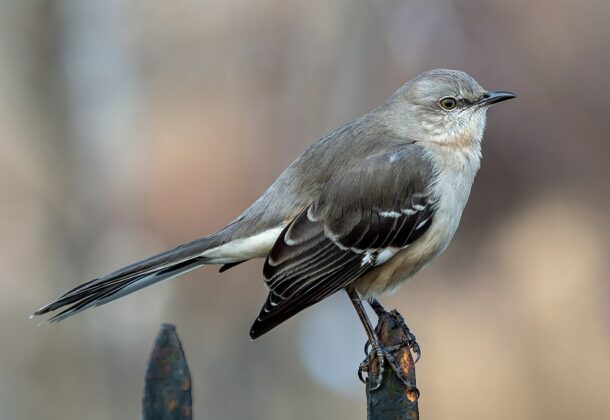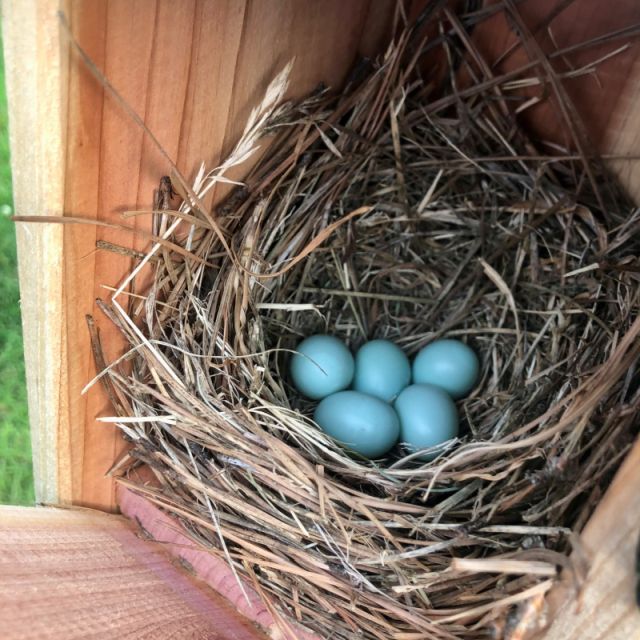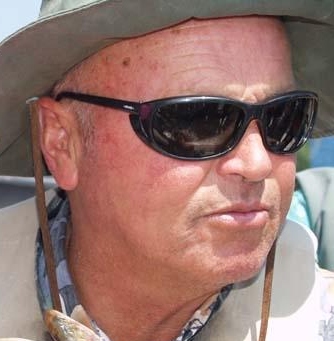Mockingbirds and Bluebirds: Message from the Cap’n

Message from the Cap’n is a compilation of fishing advice, waterman and weather insights, Chesapeake lore, and ordinary malarkey from the folks who keep their feet wet in the Potomac and St. Mary’s rivers.
Check out today’s water temperature and salinity at the Interpretive Buoy System website at the Potomac location off Cornfield Harbor. A wealth of information is found within the different locations up and down the Bay with frequent updates.
It is interesting to have birds nesting in the backyard. I will touch on several, highlighting for mockingbirds and bluebirds.
Mockingbirds (All About Birds; Cornell Lab of Ornithology): Poison Ivy overtook a cedar tree in my mother’s backyard over a 20-year period. The trunk of the ivy was 3″ in diameter, and it grew straight up to the top of the cedar and then branched out to make a ball of tangled vines.
In the spring, we started to clear the ivy to give the cedar some relief. We used a small chain saw cutting the vine near the ground and pried it off the tree’s trunk. At the top we found a mockingbird nest in those brambles, with five small birds within.
We left them alone and took the ladder down. Within minutes the mama bird was back feeding the young. It made me feel good looking out for those youngsters.
Mockingbirds will nest in the most unpredictable places. They love wire crab pots. I suppose that they like the safety within. A small cedar tree, a rose bush, pine tree bough, even a crooked branch of a willow tree. They also are very vocal. Many birds have a repertoire of several hundred tunes and sounds that they have learned over time.
The mockingbird dominates the yard, scattering birds hither and yon just to let them know who’s boss! I have seen them dive bomb humans, dogs, cats, and other animals. Even crows don’t stand a chance against them. They love to have one mow the grass because that disturbs so many bugs for a fine feast. Male and female feed the young non-stop for several weeks, and then the brood takes flight. Parental feeding takes place for several more weeks, and then the youngsters are on their own for survival.
Before long the cycle repeats itself over the summer. Guess the ivy brambles will have to stay put.
Bluebirds (Chesapeake Bay Program): A sight to behold in any neighborhood throughout the nesting process. I bought a bluebird box from a local box store for 12 bucks and placed it in the yard on a metal pole. It was relatively open area, but the bluebirds weren’t interested. No luck on the first placement. After several weeks I moved it to a more open space.
 After about a week I was getting ready to move it again. Lo and behold I found a nest in it with five blue eggs inside. Totally elated, I took stock of the surroundings and did a little research. The males start the courtship, and the female mostly builds the nest, after which she lays and incubates the eggs for several weeks until they hatch. Both parents feed the youngsters almost nonstop during daylight hours. (Only nocturnal birds feed at night diurnal birds feed in the day. It’s that simple, says BirdHour.)
After about a week I was getting ready to move it again. Lo and behold I found a nest in it with five blue eggs inside. Totally elated, I took stock of the surroundings and did a little research. The males start the courtship, and the female mostly builds the nest, after which she lays and incubates the eggs for several weeks until they hatch. Both parents feed the youngsters almost nonstop during daylight hours. (Only nocturnal birds feed at night diurnal birds feed in the day. It’s that simple, says BirdHour.)
Bluebirds are possessive and territorial as well, but very refined, not so aggressively as the dive-bombing mockingbirds.
Enjoy your background feeders and bird water baths. It is important to keep them clean for the health of your avian visitors.
Till next time, remember “It’s Our Bay, Let’s Pass It On.”
To learn about tours and trips into the Chesapeake, keep in touch with Fins + Claws on Facebook. Catch up on Messages from the Cap’n Member Page. Please visit Cap’n Jack’s lore and share with your social media sites. Or reach him here: [email protected] or 240-434-1385.























